|
Fantasy Radios-Design Patent Images 1930-1943 (Part 1) |
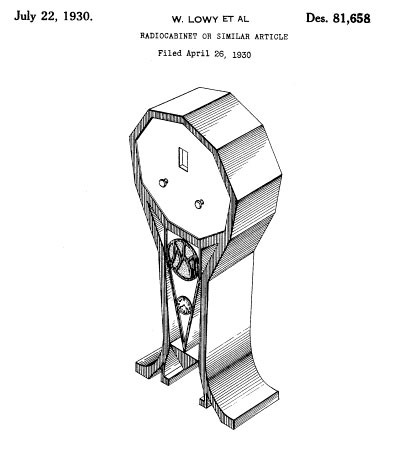 |
|
While everyone is familiar with the patent, which protects an
inventor or developer of new technology from theft of his work, less
well known is the design patent, which similarly protects the visual
design of the package in which that technology would be marketed. Featured on this, and succeeding pages are a collection of images from US design patents from 1930 to 1943, showing radio and radio accessory designs that were, to the best of my knowledge, never produced. Some were commissioned by well known companies, such as Zenith, but most were freelance designs, which never found a market. Some are beautiful, some are ugly, and some are simply bizarre, but all are interesting. Some would be hugely valuable, if they actually existed. The pictures are shown in chronological order, starting with the earliest. |
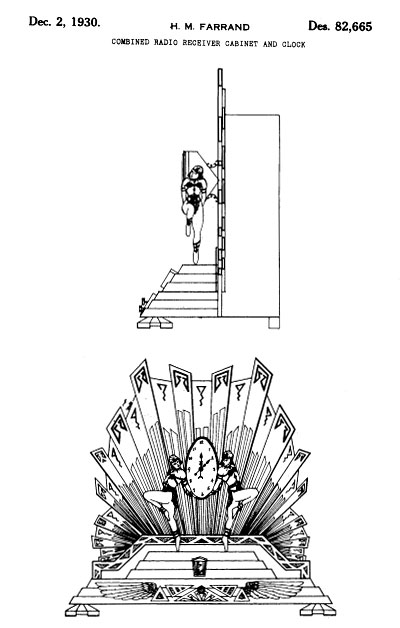 |
|
This radio-clock is solidly in the Egyptian Revival/Frankart tradition that had thoroughly worn out its welcome by 1930. No doubt it would have been painted a revolting shade of green. |
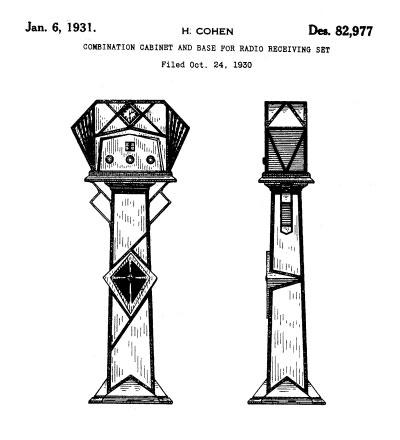 |
|
Somehow, I almost expect to be able to fill my gas tank from this unusual design. |
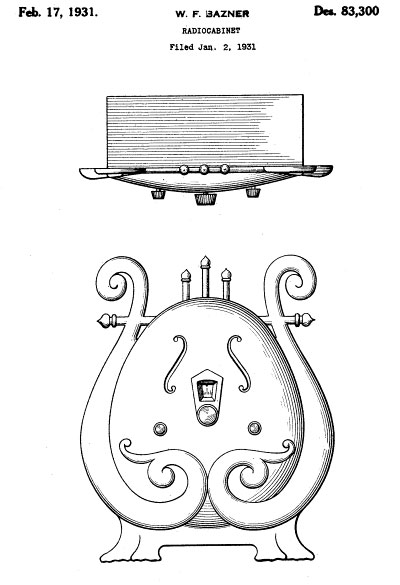 |
| I suppose this beast was meant to look like a lyre, but it looks more like Humpty Dumpty to me. I would gladly push it off the wall. |
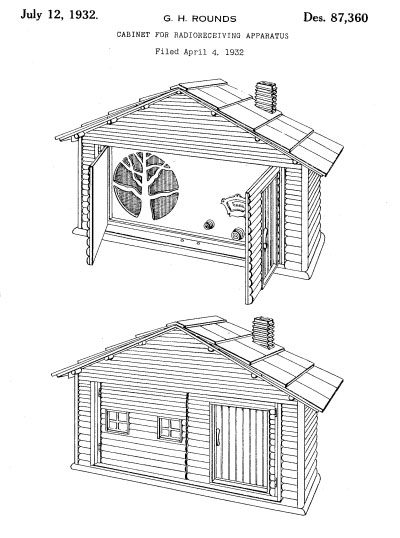 |
|
There were a few "house" radios produced, the most common being the hideous Empress Chalet. This one is quite nice, however, and should have been made instead. |
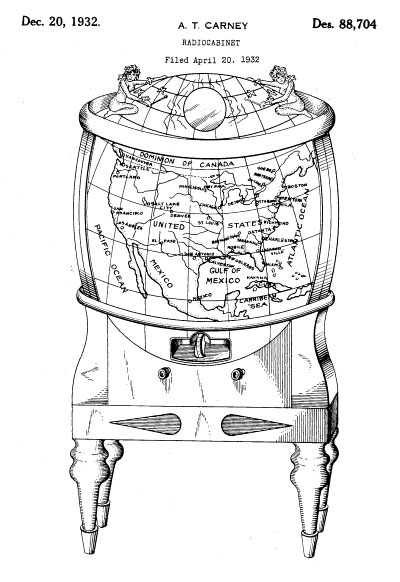 |
|
Unlike many of the other radios shown here, it was probably best that this atrocity was never produced. The two tiny nudes at the top didn't help what was otherwise a singularly ugly creation. |
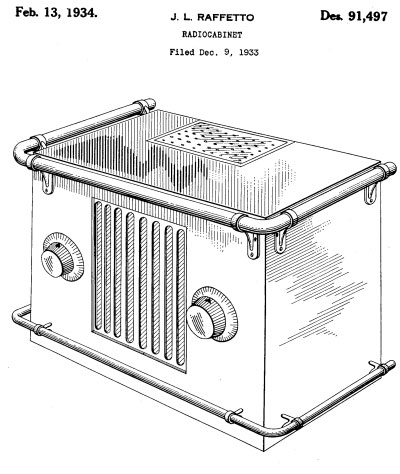 |
| The repeal of Prohibition brought a flurry of beer and liquor-related designs. This one was a tiny bar, complete with brass rails. The design patent application was filed only 4 days after repeal. It probably took that long for the designer to sober up after the big party. |
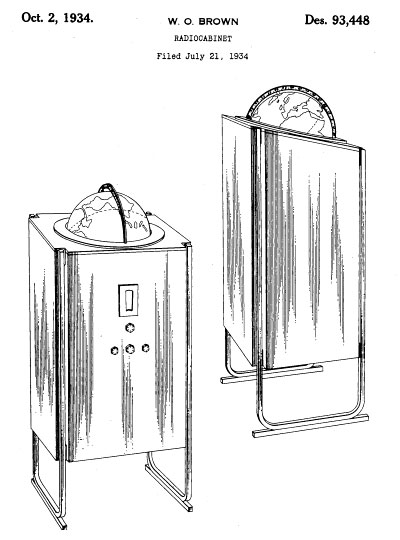 |
| This is one of only a handful of radios that incorporated a globe into its overall design. Since it's only a fantasy, we might as well imagine it in a black lacquer finish with chrome supports. And, of course, the globe would have to be illuminated. |
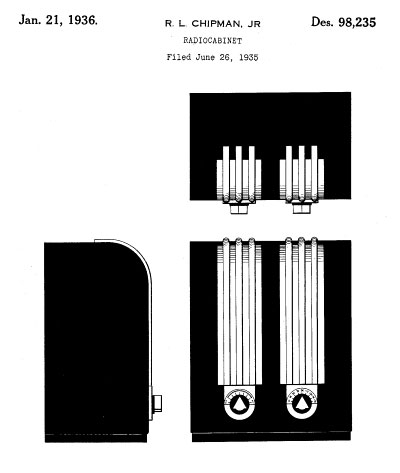 |
|
This stark Art Deco design was produced for the Bakelite Corporation, and is reminiscent of some British designs, with a dark shell and white Plaskon trim. It is easy to imagine other color combinations, but imagination is the only way you will ever see one of these beauties. |
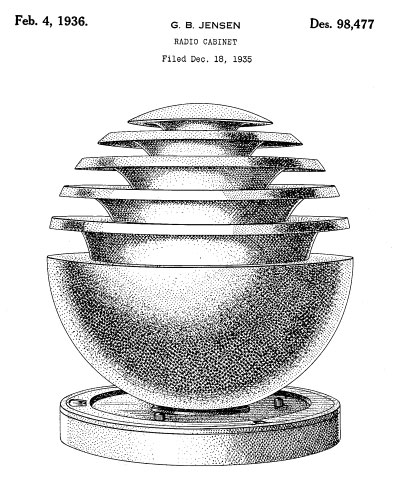 |
| This extraordinary design was the work of industrial designer, Gustav Jensen, a Dane who lived in New York City. Had this design ever been built, it would be one of the Holy Grails for the collector of deco radios. It would have been very expensive to produce, so it was stillborn in the dark days of the Depression. |